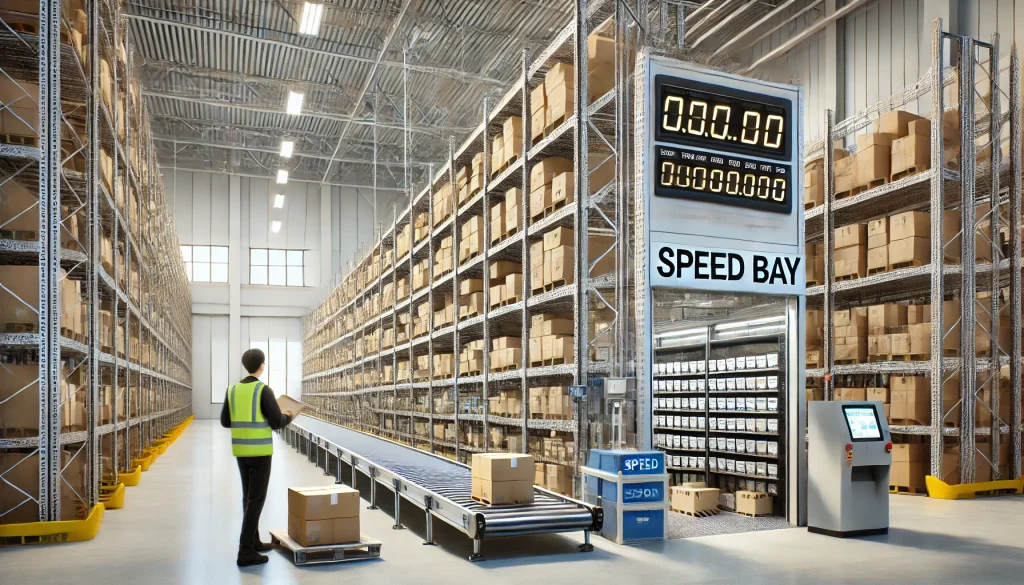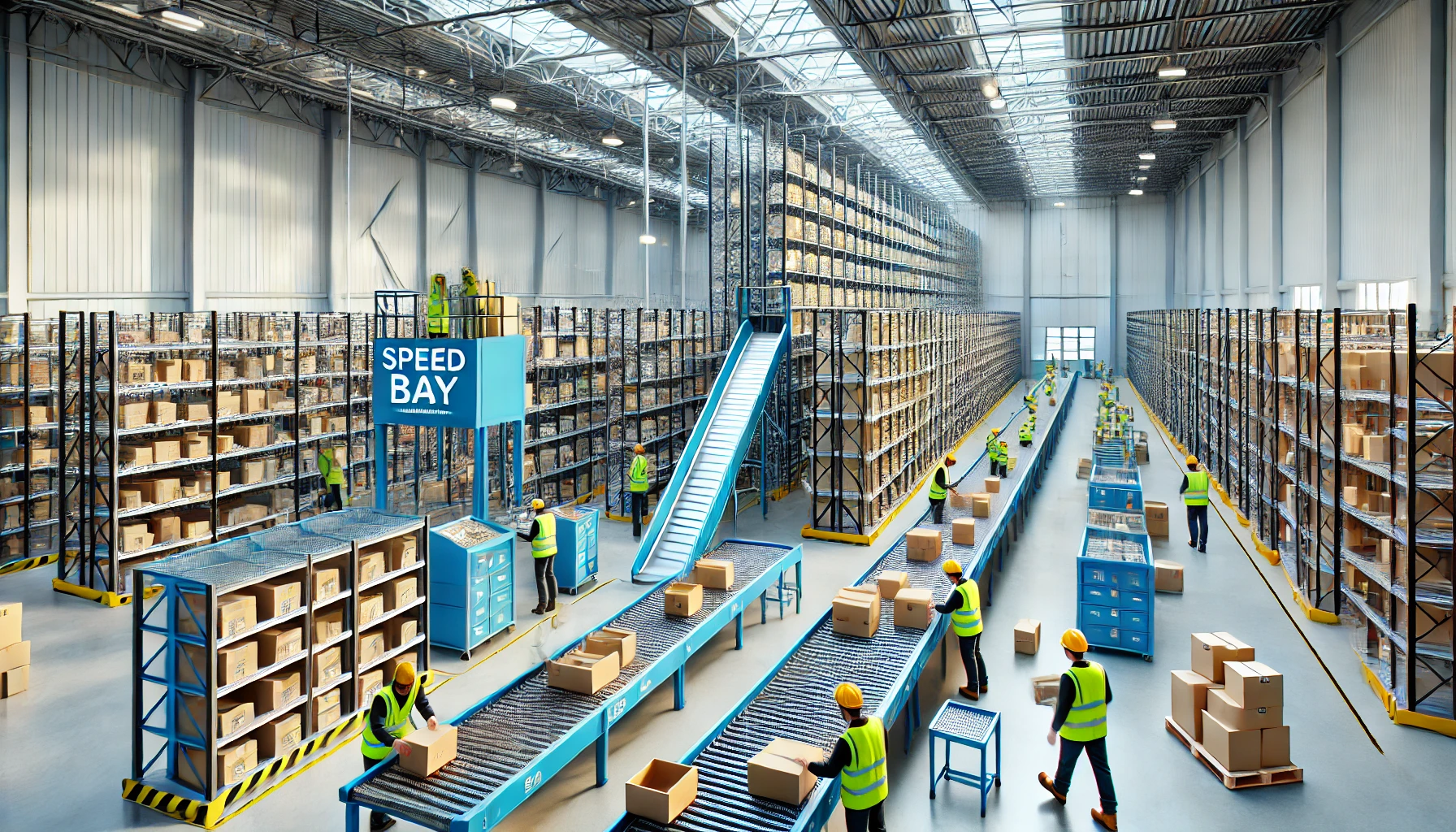Efficiency is paramount in the fast-paced world of logistics and supply chain management. One innovative solution that warehouses employ to enhance productivity and streamline operations is the implementation of speed bays. This in-depth article explores what is a speed bay in a warehouse, including the design, operational efficiency, types of items stored, technology and equipment, and best practices associated with speed bays, providing a comprehensive understanding of their importance and functionality. Effective use of speed bays is key for improving material flow evaluation.
What is a Speed Bay in a Warehouse? Design and Layout
Design and layout are critical for maximizing the effectiveness of speed bays in a warehouse.
Space Utilization
Effective space utilization is crucial in maximizing warehouse efficiency. Speed bays are designed to make the most efficient use of available space, minimizing workers’ travel time. By incorporating high-density storage solutions such as compact shelving and vertical racking systems, speed bays ensure that space is used optimally, allowing more items to be stored within a smaller footprint.
Accessibility
Accessibility is a key feature of speed bays. These areas are strategically placed near packing and shipping zones to reduce workers’ travel distance. Items stored in speed bays are often positioned at waist or eye level, making it easier for workers to access them quickly without the need for ladders or bending, which also reduces the risk of injury.

Flow Optimization
Ensuring a smooth flow of goods is essential to reducing bottlenecks and maintaining a streamlined operation. Speed bays contribute to flow optimization by organizing pathways and storage layouts that facilitate the easy movement of items from storage to shipment. This careful planning helps maintain an uninterrupted workflow, ensuring that goods move efficiently through the warehouse.
Operational Efficiency
Operational efficiency focuses on maximizing productivity and minimizing waste within speed bays.
Picking Speed
Enhancing picking speed is one of the primary objectives of speed bays. Methods such as batch picking, where multiple orders are picked simultaneously, and zone picking, where workers are assigned to specific areas, significantly boost the speed and accuracy of the picking process. This reduces the time taken to fulfill orders and minimizes errors.
Reduced Handling Time
Reducing the handling time of items is another crucial aspect of operational efficiency. Speed bays are designed to minimize the number of touches each item requires before shipping. This can be achieved through direct-to-ship systems where items are picked, packed, and shipped in a streamlined process, cutting down on unnecessary handling steps.
Labor Efficiency
Optimizing labor usage involves ensuring that workers are utilized effectively, reducing downtime and increasing overall productivity. Speed bays help reduce workers’ time walking and searching for items. This allows for more efficient use of labor, ensuring workers focus on high-value tasks such as picking and packing.
Types of Items Stored
Different types of items require different storage strategies within speed bays.
High-Velocity Items
High-velocity items, or those that are in constant demand, are prime candidates for storage in speed bays. These items are identified through sales data and usage patterns, ensuring that they are always readily available for quick picking. This reduces the time taken to fulfill orders and keeps inventory moving efficiently.

Seasonal Items
Seasonal items, which experience high demand during specific times of the year, are also stored in speed bays. By placing these items in easily accessible locations, warehouses can quickly respond to seasonal spikes in demand, ensuring that stock levels are maintained and orders are fulfilled promptly.
Promotional Items
Promotional items that are temporarily in high demand due to marketing campaigns or special offers benefit from being stored in speed bays. This allows for rapid access and quick turnover, ensuring that promotional campaigns run smoothly and customers receive their orders in a timely manner.
Technology and Equipment
Technology and equipment play a vital role in enhancing the efficiency of speed bays.
Automation
The use of automation in speed bays can significantly enhance efficiency. Automated systems such as conveyors and robotic pickers can speed up the picking process and reduce the reliance on manual labor. These systems are designed to work seamlessly with the layout of speed bays, ensuring that items are moved quickly and accurately.
Inventory Management Systems
Implementing Warehouse Management Systems (WMS) is crucial for better inventory control and real-time tracking. WMS can help manage the placement of items within speed bays, track stock levels, and optimize picking routes, all of which contribute to improved operational efficiency.
Barcoding and RFID
Technologies such as barcoding and RFID are essential for tracking and managing items efficiently. These systems provide real-time data on the location and status of inventory, reducing errors and improving accuracy in inventory management. Barcoding involves scanning items to update inventory records, while RFID uses radio waves to automatically identify and track tags attached to items.
Best Practices
Adhering to best practices ensures that speed bays operate at peak efficiency.

Regular Audits
Conducting regular audits is essential to ensure the optimal performance of bays. Audits help identify inefficiencies, verify inventory accuracy, and ensure that all processes function as intended. Regular reviews and adjustments based on audit findings help maintain high standards of operation.
Training Programs
Training staff on best practices for speed bay operations is crucial for maintaining efficiency. Workers should be well-versed in picking techniques, the use of technology, and safety protocols. Continuous training programs keep staff updated on new technologies and methods, ensuring they can perform their tasks effectively.
Continuous Improvement
Implementing a feedback loop for continuous improvement is vital for long-term success. Encouraging suggestions from staff and regularly reviewing operational data allows for ongoing refinement of processes. By constantly seeking ways to improve, warehouses can maintain high levels of efficiency and adapt to changing demands.
Conclusion
Speed bays are a powerful tool for enhancing warehouse efficiency. By focusing on strategic design and layout, optimizing operational efficiency, storing the right types of items, leveraging technology and equipment, and adhering to best practices, warehouses can significantly improve their productivity and service levels. Implementing speed bays requires careful planning and continuous management, but the benefits in terms of reduced costs, faster order fulfillment, and improved accuracy make it a worthwhile investment.

